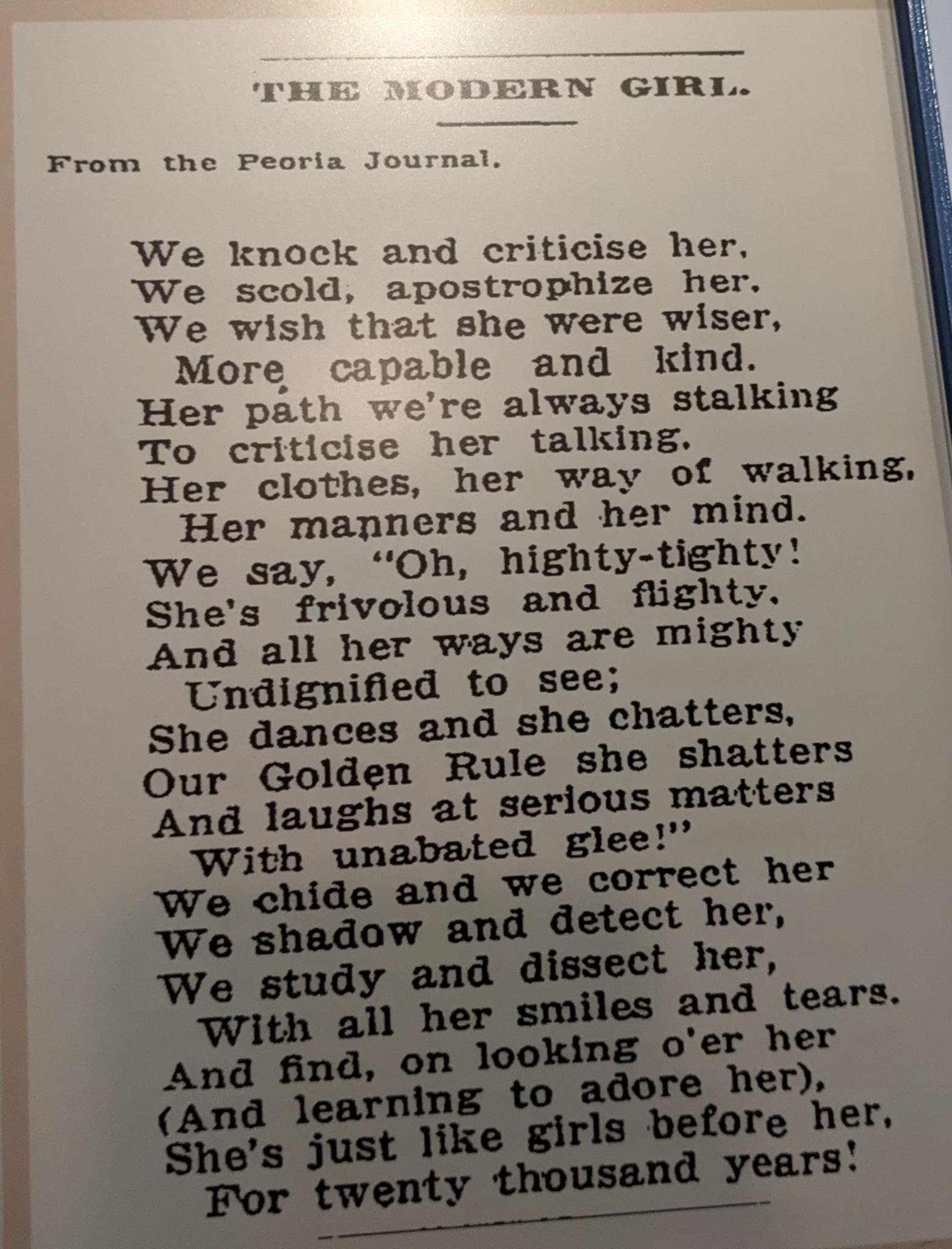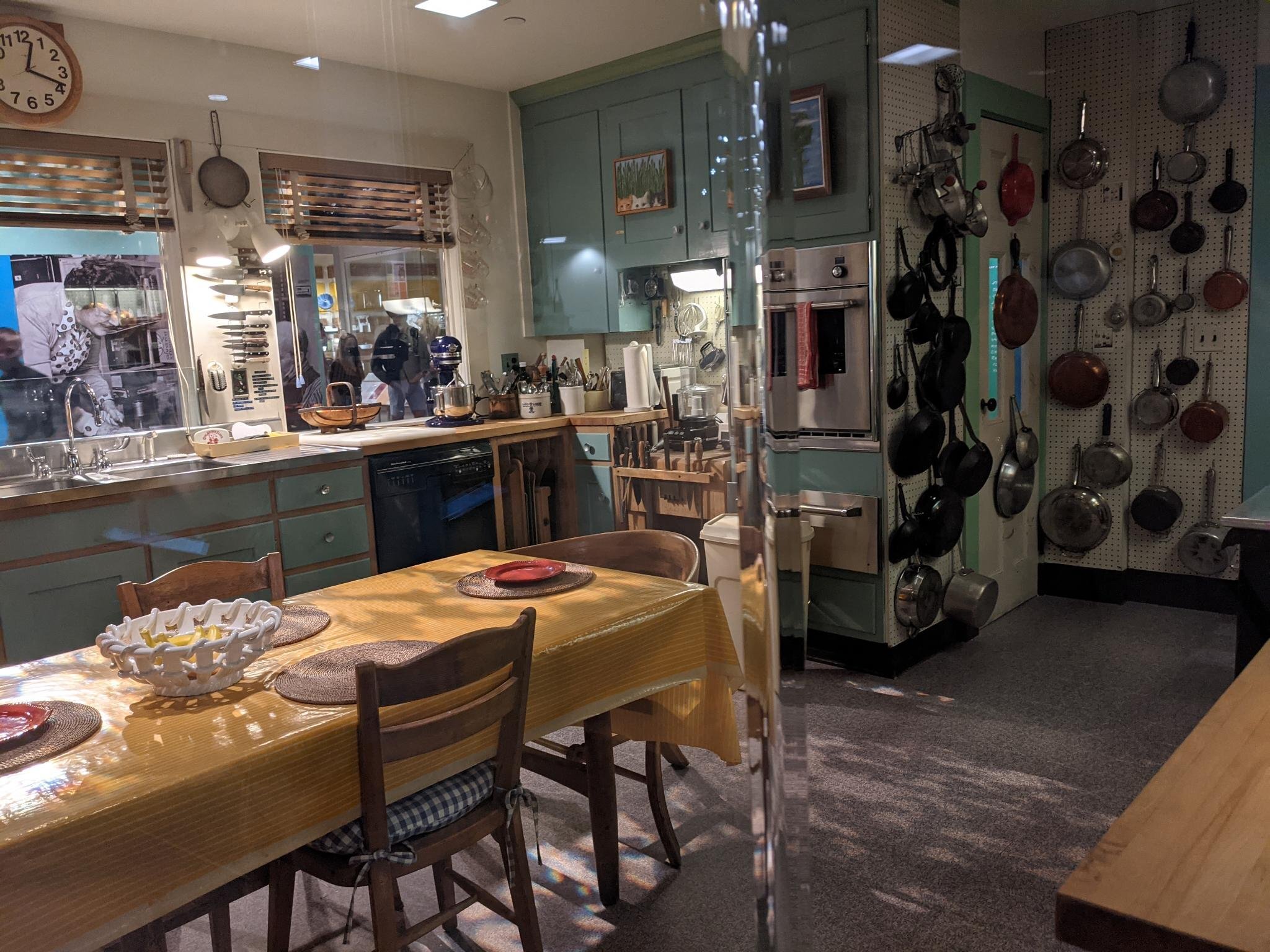Girlhood
And for this week’s installment of ‘Freya writes about her latest visit to a museum…’, I will be featuring the Smithsonian National Museum of American History :)
I’m sorry - I can’t help it. Since the Smithsonians have been gradually reopening, I have immersed myself, and, unsurprisingly, they really give me a lot to think (and write) about!
The Museum of American History was not one that I was initially most excited about, but in the end, I really loved it. It is full of stories about people, food, fashion, art, literature, invention, politics… All the things that shape what America is today and how this country affects the whole world. And the museum’s collection is ever-evolving and growing - you will see signs all over the place indicating that the work is ongoing, the collection incomplete. There are two clear messages that the museum left me with; 1) That America is a beautiful patchwork quilt, built from as many different cultures and peoples as there are stars in the sky, and 2) That it is important to examine the ways in which the history of this country affects our attitudes and behaviours to this day.
I’m quickly learning that in each of the Smithsonian museums there is A LOT to see - too much for one visit. There are nooks and crannies with more interesting artifacts all over the place! In this particular museum, one such corner on the top floor was of special interest to me - the history of girlhood. The exhibit took us through many of the complexities of being a woman in America, then and now, and how each generation of women has helped the next in dismantling prejudices, injustices, and expectations. As curator Mireya Loza says, “Girls have just as much of a right as everyone else to see themselves as powerful contributors to American history. They have political views, they make culture, and they have also contributed labor. And we can all learn more about American history through the story of girls.” - Why Girlhood?, By Megan Smith.
It’s pretty fascinating to me that girls are still fighting the same fight that they were a hundred years ago; we are still seeking full (legal) control of our bodies, proper education about our sexual anatomy and birth control, and we still have to prove our worth in every workplace. Girls continuously have to contend with absurd beauty standards to be respected, and accept the constant bombardment of advertisements for products and pills that we must buy so that we will be more attractive. We are still expected to put motherhood first, to compromise our careers, and to look after our households, AND we are taught that we should be happy about this! If we resist, we are considered obstinate and headstrong at best, but mostly just emotional, ‘nasty’, and even dangerous.
I saw this poem in the exhibit, originally published in the Peoria Journal in 1914;
Reading this, it really doesn’t feel like anything much has changed for women since 1914 - ‘She’s just like girls before her, For twenty thousand years!’. Which isn’t to say that the work we do to achieve standards of equality isn’t important; every time a woman speaks up in her workplace, makes an autonomous decision about her body, or exercises her right to vote, she is shattering the expectations of her that have for so long been upheld by a society dictated by powerful (white) men. If anything, looking at the history of girlhood should help to reignite our drive in continuing this important work, especially in the moments when we feel most demoralised.
I suppose the fact that I am turning 30 this week is making all of this feel very relevant to me right now. As a woman, I realize that there are growing societal expectations of me and my body, and things that don’t usually bother me are beginning to feel a little more unbearable. I know I ‘should’ be investing in expensive moisturizers to prevent wrinkles (actually, at this stage it’s probably too late for moisturizer - botox is the only real option left), I probably drink too much, and pretty soon the questioning looks I get about whether I am planning to have children will likely turn into real conversations (if they haven’t already).
Funnily enough, I feel very happy about getting older! I’m grateful for life, I enjoy the new perspectives that life experience gives me, the ways I’m changing physically and emotionally, and I’m certainly looking forward to a better decade than the last. But with the reminder from this exhibition of the struggles of women throughout history, the ways that we have fought to overcome them, and how this has affected the whole of society around us, I feel shaken up. As I turn 30, I want to honour the strength and perseverance of women, give the female voices in my life priority, and treat myself and my own decisions with the respect that I deserve. There’s nothing quite as humbling as realizing how insignificant one is, that this one life we have is a tiny drop in a massive bucket, so we may as well do what we can with it while we’re here.
Speaking of female trailblazers, here’s a picture of Julia Child’s kitchen, which she donated to the Smithsonian, that I thought was completely delightful!
Some Interesting Things
I’ve got a concert!!!
‘Breasts and Eggs’, by Mieko Kawakami, is an intimate story of the lives of women, written by, refreshingly, a woman! I didn’t find it an easy read - it can be unsettling and difficult at times. But Kawakami’s writing is incredibly original and unique, and this read is worth it.
I thought this article by Louisa Thomas for The New Yorker, perfectly illuminated the situation surrounding Naomi Osaka’s decision to withdraw from the French Open. Whether you consider Osaka to be completely justified in her decision or think she should have sucked it up - it’s all part of the job, you have to acknowledge her bravery and courage for doing what she did in the face of such powerful adversity.
I’m currently listening to, and enjoying, the new album from Greek-Welsh pop artist, Marina, ‘Ancient Dreams In A Modern Land’. Here’s an interesting profile of it by Steffanee Wang for Nylon.
I’m particularly enjoying the (rather strong) Belgian Tripel from Denizens Brewery in Maryland.
Following my last point, ‘America Has a Drinking Problem’, by Kate Julian for The Atlantic, was fascinating.
Yesterday, I ate some of the most delicious food I’ve had so far in Washington, and I learned how to eat Crawfish too!
This article, by Linda Greenhouse for the NY Times, which attacks the ‘Heartbeat Bill’ signed by Gov. Greg Abbott of Texas last month and questions the silence of large corporations, is really well written and relates to everything I talked about earlier.
”It seems to me that a person doesn’t have to be an abortion-rights crusader in order to see this law for what it is: a perversion of the legal system as Americans have traditionally understood it.”As I head into the last remaining days of my 20s, it is with this sentiment that I kiss them a relieved goodbye:


